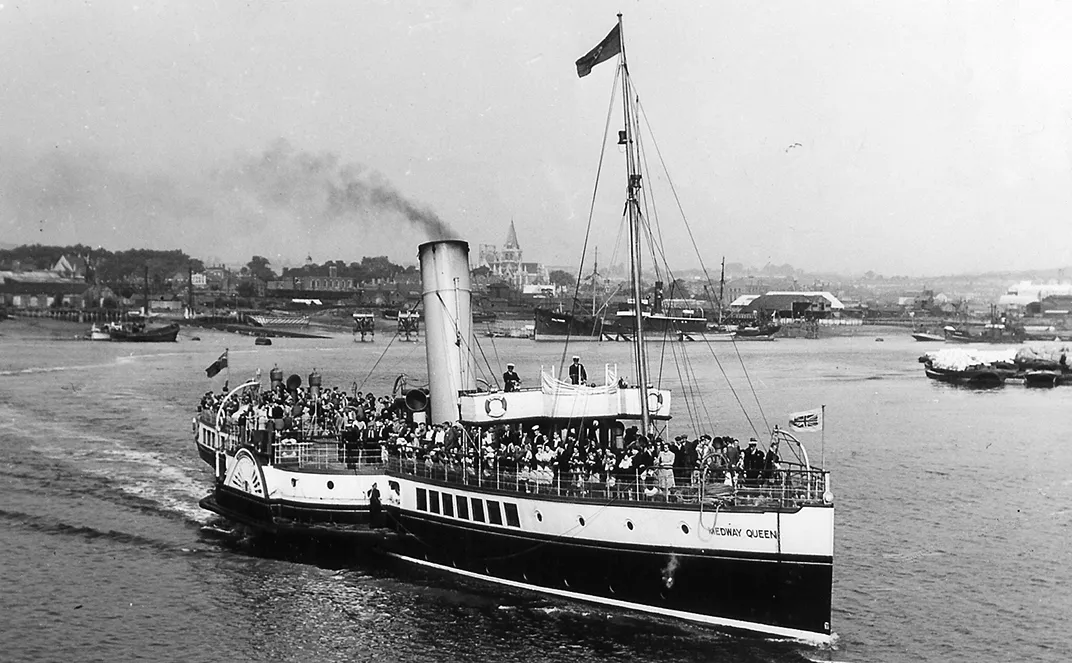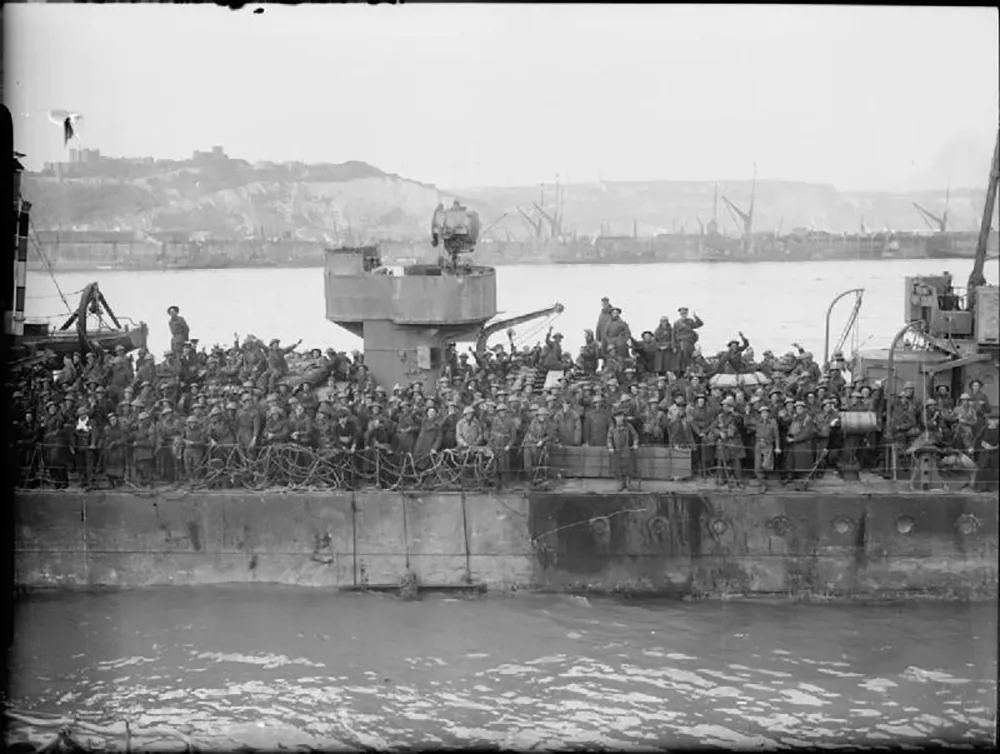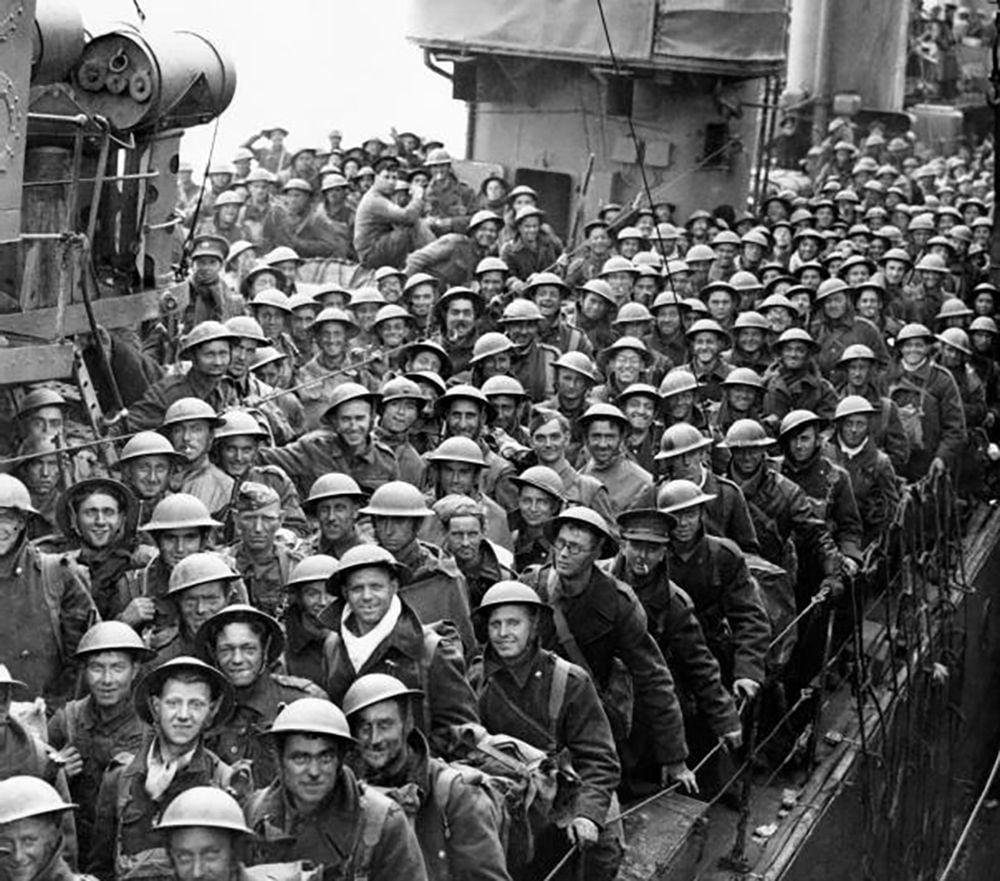The True Story of Dunkirk, As Told Through the Heroism of the “Medway Queen”
Retrofitted by the British Navy, the paddleboat saved 7,000 men over many dangerous trips across the Channel
/https://tf-cmsv2-smithsonianmag-media.s3.amazonaws.com/filer/dd/da/ddda3d48-abb6-46b0-87e5-817abf580736/large_000000.jpg)
The crew of the Medway Queen was taking on an unusually large load of supplies for their next mission. The cook’s assistant remarked, “Enough grub has been put aboard us to feed a ruddy army,” writes Walter Lord in The Miracle of Dunkirk. As it turned out, that was precisely the idea. Little did the crew know, but the Medway Queen was about to be sent across the English Channel on one of the most daring rescue missions of World War II: Operation Dynamo, better known as the evacuation of Dunkirk.
In the late spring of 1940, European powers were still engaged in what had been dubbed the “Phoney War.” Despite Germany’s invasion of Poland the previous September, France and Britain had done little more than assemble troops on their side of the defensive lines and glower at Adolf Hitler’s troops. But on May 10, the Germans launched a blitzkrieg attack on the Netherlands and Belgium; by May 15, they’d broken through French defenses and turned towards the English Channel. Within a week, around 400,000 Allied soldiers—comprising the bulk of the British Expeditionary Forces, three French armies and the remnants of the Belgian troops—were surrounded on the northern coast of France, concentrated near the coastal city of Dunkirk.
But rather than strike while the troops were stuck on the beaches, Hitler gave his Panzer troops a halt order. Perhaps he was worried about a British counter-attack, or he thought the German air force could overwhelm the Allied forces at Dunkirk without the help of ground artillery; the reason for his hesitation has never been entirely explained. But it gave the British military just enough time to organize an evacuation.
When Operation Dynamo began late on May 26, British officers charged with organizing the frantic escape estimated that only 45,000 men might be saved. But over the next eight days, nearly 1,000 British ships—both military and civilian—crossed the Channel repeatedly to rescue 338,226 people, while the Royal Air Force fought the Luftwaffe above. Another 220,000 Allied soldiers were rescued from the French ports of Saint-Malo, Brest, Cherbourg and Saint-Nazaire by the British.
The Dunkirk evacuation inspired one of Winston Churchill’s most dramatic speeches on June 4, when he told the House of Commons, “We shall go on to the end… we shall fight on the seas and oceans, we shall fight with growing confidence and growing strength in the air, we shall defend our Island, whatever the cost may be, we shall fight on the beaches… we shall fight in the hills; we shall never surrender.”

The events of late May, 1940, became the stuff of legend—the “little ships” piloted by civilians were alternately lauded or ignored (those that sunk made it harder for other ships to get to shore to rescue the soldiers, and many of the civilian ships were actually manned by Navy personnel).
Among the first to traverse the approximately 60 miles across the Channel to Dunkirk, and the last to leave on the final day of operations, was the Medway Queen. The former pleasure cruiser was 180 feet long, with paddle wheels on both sides of its hull. Built in 1924, the ship carried passengers on short tours on the River Thames and around Britain’s southeast side.
When it was called to the war effort, the boat was repainted and retrofitted with minesweeping gear to patrol the Straits of Dover for German mines, plus anti-aircraft machine guns. Before assisting in the evacuation at Dunkirk, the boat had already accomplished several important missions for the British war effort. The vessel transported children to safer locations around the country, and was then charged with surveilling the rivers around London and the Straits of Dover for mines. But nothing in the ship's early war experience could’ve prepared its crew for Operation Dynamo.
On the beaches of Dunkirk, chaos reigned. Soldiers formed lines into the water or onto the eastern pier (called a “mole”) and stood in their places for up to three days, without sleep, food or drink. All the while, German planes dropped bombs across the beach and onto the ships attempting to rescue the men. One soldier named Brian Bishop, who boarded the Medway Queen on June 1, described the terrifying experience of waiting to be picked up:
“The mole had been bombed in several places and across the gaps gangplanks had been placed. It was difficult carrying stretchers along it and then having to lift them shoulder height across the gangplanks. Just as we were moving on an officer examined our stretcher case and said, ‘He’s dead, tip him out and fetch another.’”
Even after Bishop made it to the ship, the soldiers couldn’t stop themselves from panicking when the German planes flew overhead, dive-bombing and machine-gunning the boat during its trip across the Channel. “When we were attacked the first few times everyone rushed to one side or to the other side when the planes were approaching,” Bishop recalled. “Someone on the bridge bellowed over a megaphone, ‘Sit down and keep still.’”

For the crew of the Medway Queen, the operation was just as strenuous and terrifying. On one overnight trip across the Channel, the ship’s paddle wheels churned up the glowing phosphorescence in the water, leaving a visible wake that made the 180-foot ship an easy target for German bombers. But the crew of the ship “were nothing if not resourceful,” said Sub-Lieutenant Graves. “[We] devised oil bags which were lowered over the bow… to break the force of heavy waves. This was most successful, our brilliant wakes disappeared,” Graves said in Dunkirk: From Disaster to Deliverance, Testimonies of the Last Survivors.
After they’d settled the issue of their shimmering wake, the crew still had to contend with the ship’s funnel, whose billowing soot caught fire. They dumped water down it to quench the flames, which one man in the engine room furiously protested, saying, “I do not intend to be f***ing well drowned on the job!” And the cook and his assistant were hard-pressed to prepare meals for the thousands of men they picked up in a galley the size of a small closet.
Although the trip only took several hours each way, the loading process could be lengthy and sometimes required picking up men from other rescue vessels that were hit by German planes. Boats went back and forth across the Channel at all times of day, going as quickly as possible to rescue as many as possible
The crew of the Medway “went into extreme danger seven nights out of eight,” writes historian Richard Halton, a member of the Medway Queen Preservation Society and the author of The Medway Queen, in an email. “They spent most of the day cleaning the ship, restocking stores, fuel and ammunition and then sailed for France each evening. They did this repeatedly despite obvious severe casualties in other vessels.”

The Medway Queen finished its last trip on June 4, after being hit by a nearby vessel that was shelled by the Germans early that morning. Despite damage to the starboard paddle box, the captain managed to steer the ship back to Dover, where its arrival was heralded by the sound of sirens from ships all over Dover Harbor. The remarkable success and bravery of the Medway Queen’s crew resulted in the captain, Lieutenant A.T. Cook, and Sub-lieutenant J.D. Graves receiving the Distinguished Service Cross, and several other crewmembers receiving awards as well. While Halton notes the statistics are unreliable, it’s estimated the Medway Queen rescued 7,000 men and shot down three enemy aircraft.
“Medway Queen made more trips than most other ships. For a small ship lightly armed she did remarkably well,” Halton said.
At the end of the battle, Dunkirk was left in ruins and 235 vessels were lost, along with at least 5,000 soldiers. The Germans managed to capture 40,000 Allied soldiers, who were forced into hard labor for the remainder of the war. But even though the operation was a retreat with heavy casualties, the rescue of nearly half a million troops from Dunkirk went on to be one of the most important victories of the war and may well have changed its outcome. As historian Patrick Wilson writes, “Rarely do people … give enough credit to the Royal Navy and the larger vessels that were responsible for rescuing the massive majority of troops. Dunkirk was the beginning of the end for the Third Reich.”
As for the Medway Queen, the ship returned to its work as a pleasure boat at the end of the war and even appeared in several movies. When the boat was retired and about to become scrap metal, a group of history lovers purchased the boat and have been working on various restoration and preservation projects since the 1980s. Today the Medway Queen is docked in Gillingham, not far from London, and is cared for by the Medway Queen Preservation Society. “In preserving the ship we keep alive memories of past ages and the stories of the people that were involved,” Halton said.
/https://tf-cmsv2-smithsonianmag-media.s3.amazonaws.com/accounts/headshot/lorraine.png)
/https://tf-cmsv2-smithsonianmag-media.s3.amazonaws.com/accounts/headshot/lorraine.png)